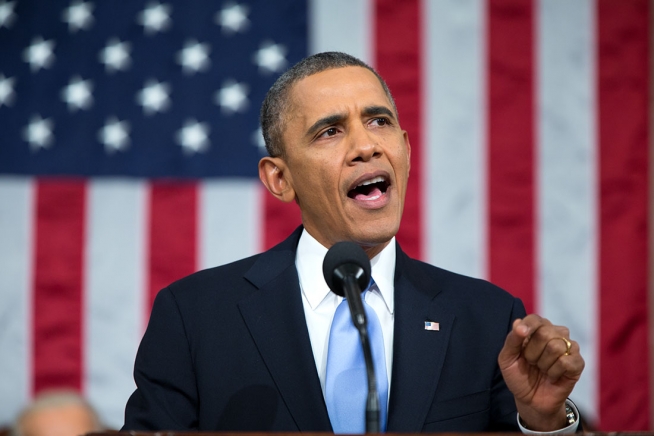In response to the number of teachers and parents who believe Americans “have some catching up to do in their use of technology,” the Obama administration launched the ConnecEd initiative last year. The campaign aims to “connect 99 percent of [America’s] students to high-speed broadband over the next four years,” said President Obama in his State of the Union address this past January.
In response to the number of teachers and parents who believe Americans “have some catching up to do in their use of technology,” the Obama administration launched the ConnecEd initiative last year. The campaign aims to “connect 99 percent of [America’s] students to high-speed broadband over the next four years,” said President Obama in his State of the Union address this past January.
According to a August 2012 poll conducted by the Lead Commission and Hart Research Associates, 61 percent of teachers and 63 percent of parents believe that America’s public schools are “somewhat behind the curve” in “taking full advantage of technology in education.” In 2013, only 39% of public schools had their entire schools connected to the Internet wirelessly.
Through the ARRA Grant program, a federal grant that provided funding for various developments for the last couple of years, the Richmond City Public Schools System (RPS) was able to get a head start on this development. “We upgraded our network to 1Gbps for all our buildings. That’s what’s considered the next generation broadband currently; it mirrors President Obama’s initiative that pertains to high-speed connectivity,” said Kavansa Gardner, the Head of the RPS Information Technology department. President Obama’s goal is to connect public schools with Internet at speeds faster than 100Mbps, with a target of 1Gbps by 2017. RPS has already reached these goals through the ARRA Grant.
The ConnectEd initiative is funded from leftover money, $2 billion, from our phone and Internet bills through the FCC in order to offer Internet, or higher-speed Internet access, to public schools. President Obama addressed in his State of the Union Address that “with the support of the FCC and companies like Apple, Microsoft, Sprint, and Verizon, we’ve got a down payment to start connecting more than 15,000 schools and 20 million students over the next two years.”
At the beginning of this month, the White House announced its progress on this initiative, announcing the seven private-sector commitments that will deliver $750 million worth of technology, including free software, devices, and teacher professional development.
The change to a higher networking speed certainly led to other changes within RPS. “We can handle SOL’s and also the added on educational online program that have been offered to institutions. Our students can connect to educational programs and websites with videos and pictures to go along with it. In the past, we could not utilize those tools because we didn’t have high-speed network. Now, since we have fiber and high-speed networks, it opens doors for more educational programs that allows students to connect to while they are in school,” Gardner said.
Some are hoping that the initiative will not only help gain faster network speeds, but also change the nature of purchasing the bandwidths as well. “The initiative will fund the e-rate program under the Federal Communications Commission (FCC) to a greater extent than it has been funded in the past. My hope is that that will catalyze change within the e-rate program,” Adam Seldow, Executive Director of Technology for the Chesterfield County Public Schools said.
Seldow has also taught online classes at Virginia Commonwealth University and worked with a professor who focuses on online education. Right now, many counties, including Chesterfield and Henrico, lease fiber connections from big Internet carriers, and pay monthly fees for the amount of bandwidths used. Seldow hopes that “some of this [ConnectEd] money could go towards helping school districts in creative ways to install their own fiber to connect all the schools… to pay one big bill to the Internet instead of renting these lines between schools.”
But for some members of the education industry, President Obama claim’s of technological improvements “without adding a dime to the deficit” are a bit farfetched.
John Musso, the executive director of the Reston-based Association of School Business Officials International, says while he supports the organization because schools are tight on money these days, members of his organization are questioning the strings and guidelines that may be attached with corporate influence in public schools. He’s also speculative of the amount of money it would cost in order to renew, replace, and sustain the devices.
“Like the light bulbs in a new house, they all go out at the same time and you have to replace them,” Musso told EdWeek. “What happens then?”
Alex Moinar, the director of Commercialism in Education Research Unit at the University of Colorado Boulder echoed these concerns, saying “this has nothing to do with whether this or that technology in this or that situation may be appropriate, useful, or educationally effective,” adding that these contributions are “just ‘venture philanthropy’ – a self-interested effort to shape a marketplace in education, and to peddle their wares.”
The announcement made by Obama earlier this month is only a progress report, and the rest of the plan has not been finalized and unveiled to the public just yet. However, some are quick to point out that in order for the ConnectEd initiative to succeed, there must be some sort of sustainability plan.
While Mary Kusler, the Director of Government Relations for the National Education Association, was excited about the EdConnect programs goals, she shared the concerns about the sustainability of the project.
“We truly do need to upgrade the level of connectivity and the resources for technology going to school districts to insure that all children, no matter where they’re from, will have the same great experience to an education,” said Kusler. “[but] it’s hard to say how we’re going to sustain this in the future; that’s actually the number one area we are focused on in terms of making sure as we talk about ConnectEd, that this is not just a bunch of one-time money. If ConnectEd is not more than a one-time investment, it is doomed to fail.”
RPS may go above and beyond on its Internet speeds, but its test scores in various schools still lack the numbers they need. Three years after the implementation of the ARRA Grant in 2009, less than half of third-graders in Carver Elementary School passed the math SOL, and only 23% of students who took the Algebra I SOL in Armstrong High School passed.
Whatever the solution for a better education is, whether it be ConnectEd or not, it is desperately needed here, and hopefully the right investments will be made for the future.



